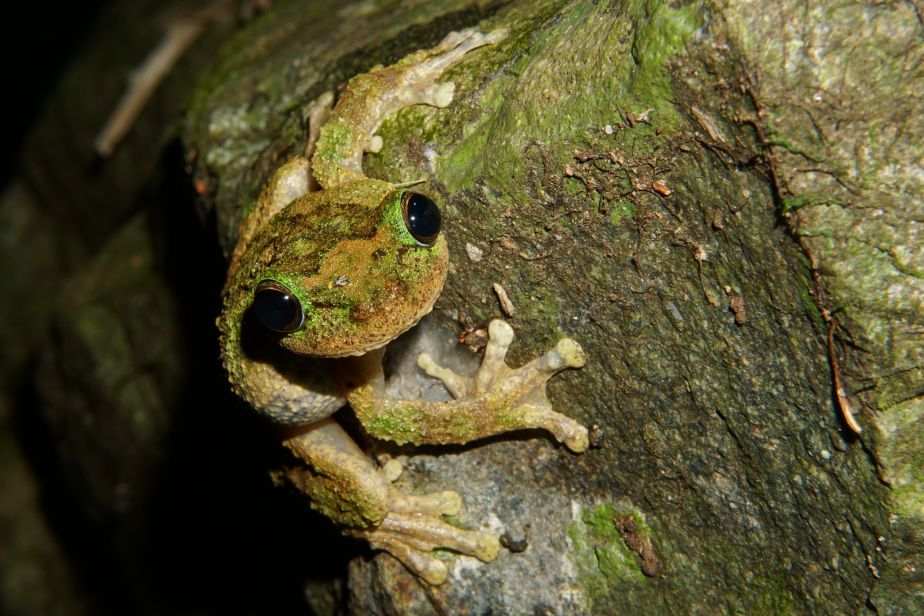Media Releases
Mystery as frog numbers rebound

James Cook University scientists are trying to figure out the reason behind some good news on the environmental front, as frog populations bounce back from a devastating disease.
In the 1980s and early 1990s, an outbreak of the fungal disease chytridiomycosis caused many species of frog to decline or disappear in the Wet Tropics of northern Queensland.
PhD candidate Donald McKnight said the disease is caused by a pathogen, which does not grow well in warm temperatures.
“As a result, the most severe declines happened at cool, high-elevation sites. But although the declines and disappearances are well-documented, much less attention has been given to the fact that many of the upland populations have recovered, even though the disease is still present,” he said.
As an example, the researchers said the waterfall frog had been completely absent during repeated surveys in the 1990s at a high-elevation site in the Girramay National Park in north Queensland. But by 2001, small numbers of the frogs had appeared again.
“From what we’ve seen, population recovery has been the most widespread and pronounced in green-eyed tree frogs and waterfall frogs. Upland populations of green-eyed tree frogs recovered rapidly, and they have even returned to their pre-decline numbers at one site,” said Mr McKnight.
He said waterfall frogs had been wiped out at high elevations, but were now back and thriving in many places, though not to the same extent. Common mist frogs have also made strong recoveries at some upland sites, but there are many places at which they have not recovered and lace-lid frogs do not seem to have returned at all.
Mr McKnight said the research teams were working with four hypotheses about what was happening.
“The first idea is that there may have been a change in the frogs’ behaviour, immune system, the beneficial bacterial community that lives on them, or a combination of those factors. The second is that the disease may simply have become less virulent. The third is that the environment may have changed to be less favourable for the disease, and the fourth that it was a precise combination of environmental factors that caused it in the first place and these have not been repeated.”
He said the work was still in its early stages and the team didn’t yet have enough information to determine exactly what had happened.
“Emerging infectious diseases are complex and what we are seeing may result from multiple factors. But understanding the phenomenon could have wide-ranging implications for managing frog populations and for understanding how disease-afflicted populations generally can recover.”
Images here. Please credit Donald McKnight.
Images are provided for one-time use only in conjunction with this press release.
They are not for re-use, re-sale or archiving apart from a public news site.
Copyright remains with Mr McKnight.
The paper is available here.
Donald McKnight
E: donald.mcknight@my.jcu.edu.au